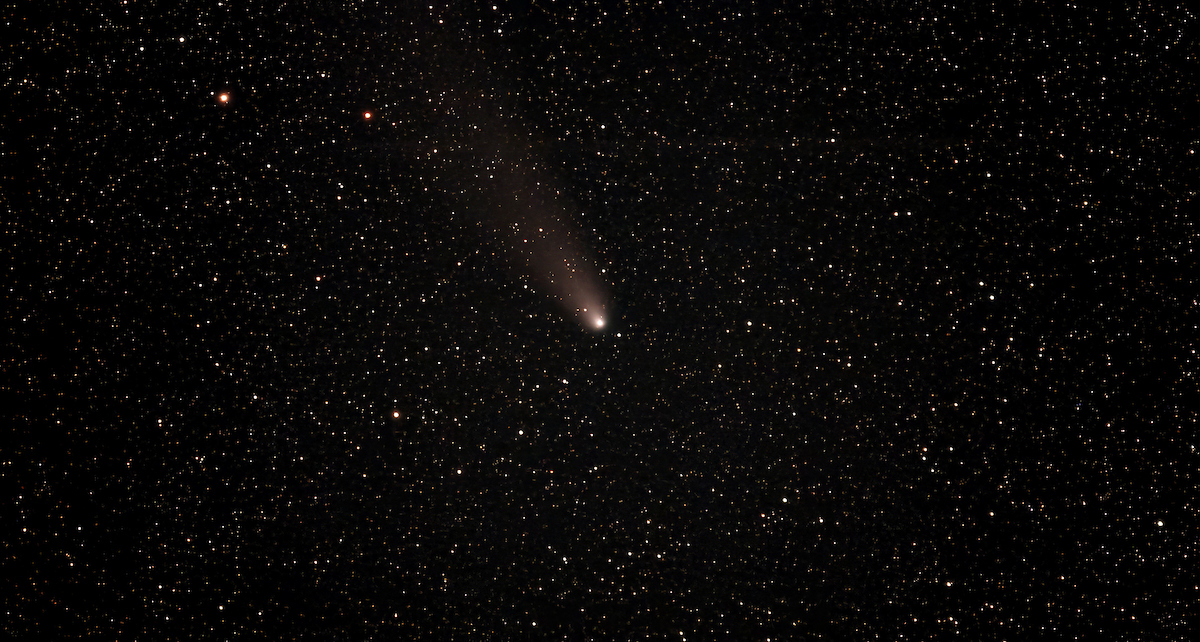Comet C/2023 A3 (Tsuchinshan–ATLAS)
Skipped a night because of clouds. The comet and tail keep getting smaller and fainter. The estimated magnitude of the comet was +7.3.





David's Images of the Day Photoblog
Skipped a night because of clouds. The comet and tail keep getting smaller and fainter. The estimated magnitude of the comet was +7.3.





The comet and tail keep getting smaller and fainter. The estimated magnitude of the comet was +7.1.





The sky to the west was partly cloudy just after dusk. Three of the telescopes were able to initialize, and two were able to collect images of the comet between the clouds. The estimated magnitude of the comet was +6.9. The tail is fainter and shorter than yesterday. The clouds were probably partially obscuring the comet resulting in fainter images especially on the Vespera Classic.


While reviewing the solar images with several sunspots, I noticed what appears to be a pair of satellites transiting the solar disk over a 4 second period. I have a composite image and the individual images of the transit. I also found images with silhouettes of birds (Turkey Vultures?) and one with an unidentified object (military jet?). I’ve also added the time-lapse video if you want to look for other objects passing in front of the sun.








The comet is still visible to the telescopes with an estimated magnitude of +6.8. The tail is fainter and shorter than yesterday. The Vespera II telescope was fitted with a CLS (city light suppression) filter causing the tint to the image. The length of the comet tail can be estimated based on the field of view for the telescope’s digital sensors. Stellina (1.0° x 0.7°), Vespera Classic (1.6° x 0.9°), Vespera Passengers (2.4° x 1.8°), Vespera II (2.5° x 1.4°), and Vespera Pro (1.6° x 1.6°). The jpg images were processed to increase the brightness (Capture One Pro) and reduce the noise (Topaz AI).





Today it was silhouettes of a turkey vulture, some other birds, and partial silhouettes of a jet and a small plane passing in front of the sun. I’ve also added the time-lapse video if you want to look for other objects passing in front of the sun. There are several sunspots (we are at or near the solar maximum) that are constant across the video. When viewing the individual images there are some with small dots (satellites?) and blurs (blowing autumn leaves).




The comet is still visible to the telescopes with an estimated magnitude of +6.8. The tail is fainter and shorter than yesterday. The Vespera II telescope was fitted with a CLS (city light suppression) filter causing the tint to the image. The length of the comet tail can be estimated based on the field of view for the telescope’s digital sensors. Stellina (1.0° x 0.7°), Vespera Classic (1.6° x 0.9°), Vespera Passengers (2.4° x 1.8°), Vespera II (2.5° x 1.4°), and Vespera Pro (1.6° x 1.6°). The jpg images were processed to increase the brightness (Capture One Pro) and reduce the noise (Topaz AI).




